Slowly Building Knowledge
American Goldfinch
Birding is a practice of observing, learning from your observations, and observing again; an acretion of knowledge that builds a broader platform for better observations. While I could certainly learn all the nuances of birding perusing books and information available online, I prefer initiating learning with my own observations before checking and exploring further against what others have learned and shared before me. Perhaps this is a slower path for acquiring knowledge, but it feels less like a task, and each discovery feels like a tiny wonder.
Even common, regularly spotted birds, can reveal new information with each season. The American Goldfinch is a favorite for many backyard birders, and I, too, am a fan of their glinting yellow backs and black markings (There’s a reason I chose it for my avatar on this site). Before moving to the Driftless, I loved watching goldfinches swarm the cup plants in the backyard of my Minneapolis home.
Along the sides of dirt roads, flowers drop their petals and reveal seed, and that’s where you’re most likely to spot the American Goldfinch: among the Wild Carrot, Common Cow Parsnip, and other flowers of the field.
Note: many of the images shared here are better viewed on a larger screen.
Creekside
The creekside is a regular birding spot for me. I’ve seen quite a variety of birds during my slow morning walks. They come to bathe (see the Robin spa day), make a nest off the banks, grab a bite to eat, or simply to get a drink. Earlier this month, I watched a small flock of American Goldfinches flit along the creek, and I took a few pictures hoping to get them midbath. When I got home and checked my pictures, it appeared they had something else in mind as they hopped along the rocks.
Trapped in the beak of a male goldfinch, I saw a string of something vegetal. I understand that this isn’t earth-shattering news to most folks, but it was a pretty exciting revelation to me! What was he eating? Had he brought it with him? Was it detritis left from an earlier meal? This simple observation had set me on a misson to learn more. I skipped Google, though, and decided I’d be more deliberate when I next visited the creek.
Return to the Creek
The following weekend, without the typical weekday morning meetings cutting my birding short, I wandered back to the creek wading across the water to put the sun at my back wait for goldfinches. I didn’t have to wait long before a small flock started arriving on the creek bank.
I’ve commonly observed a single female with multiple male goldfinch, typically three to four male goldfinches. As you can see above, three males are to the left of the female at the right of the picture. I’ve seen a varity of combinations, and, as birds shift and move, it can be easy to lose track with casual observation. I would learn after my photo session, that American Goldfinches do form loose flocks and females may breed with more than one male in a season (polyandry). Perhaps this queen of the goldfinches travels with her stable.
Really, though, according to scientific research it seems as if only experienced females breed with another male for their second clutch, leaving the first male to finish raising the young. I’m willing to believe that goldfinch behavior can vary across regions, but until I’m willing to be as careful with my observations and documentation as the orinthologists, I won’t insist too much on my version of the story!
As I sat quietly, occasionally snapping a picture, birds would hop from rock to rock looking for the best perch from which to grab bits of algae.
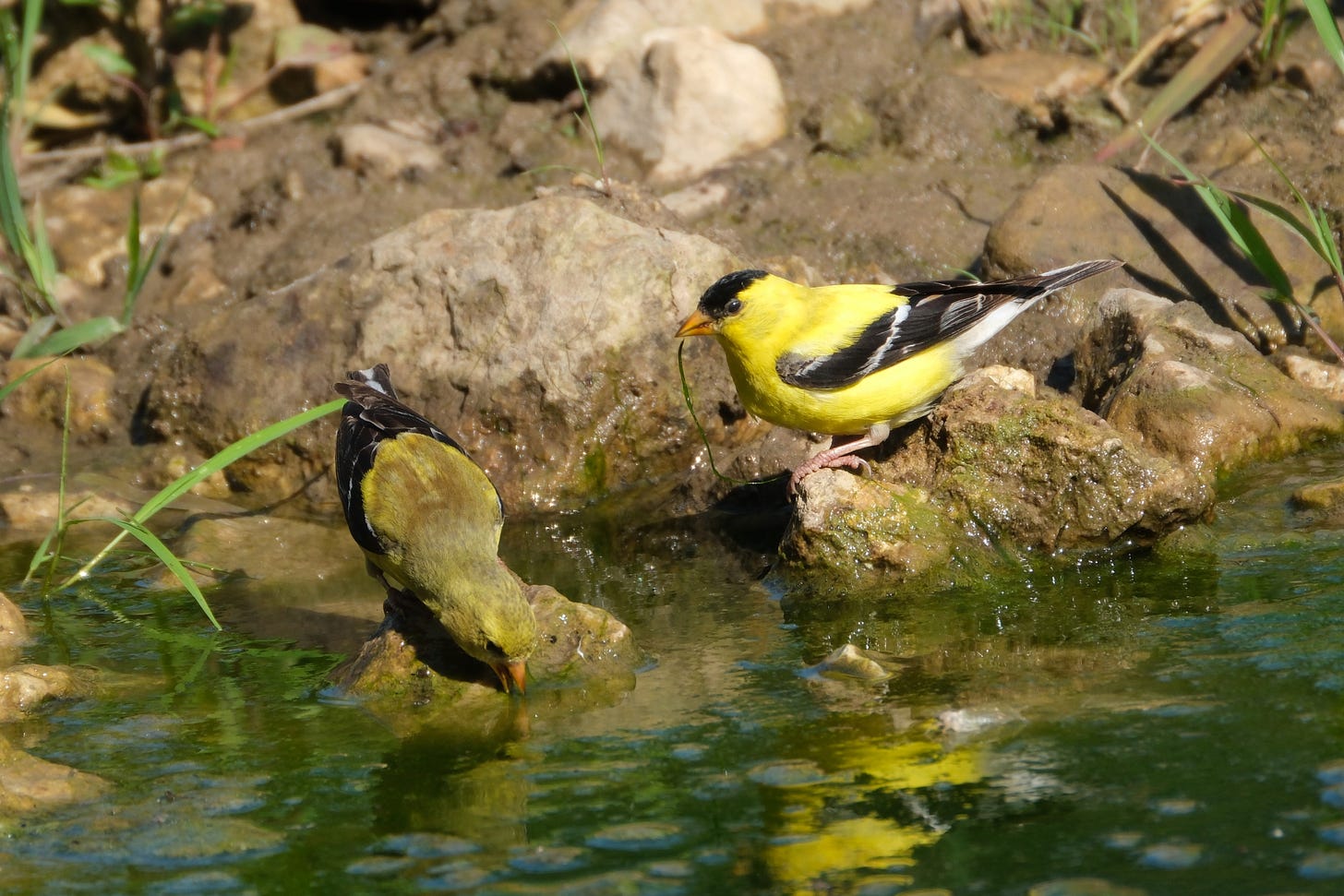
Again and again, it surprises me how quickly a bird can disappear into their background. This female goldfinch was no different. While I’ve zoomed in on the images below to put better focus on the birds, there were a number of times where I thought she had flown off only to spot them on a different rock, plucking at a different patch of algae.
Of course, goldfinches are small birds and could easily duck behind the rocks along the bank.
Their foraging seemed specific, they’d gaze intently into the water before splashing in for a nibble. Some point later, I’ll dig in to learn more about the algae they’re eating, but, for now, I’m content to watch them as they look for the next bite.
According to All About Birds, “Goldfinches are among the strictest vegetarians in the bird world, selecting an entirely vegetable diet and only inadvertently swallowing an occasional insect.” Because of this, Brown-headed Cowbirds hatched in a goldfinch’s nest won’t survive. There’s simply not enough protein in the goldfinch, a bitter bit of good news for some birders.
Applying the Lesson
For birders and photographers of birds, any knowledge that helps you reliably find what you’re looking for is welcome. Instead of just looking for American Goldfinches foraging for seeds, I could begin searching them out where the algae grows. So, when I went to another birding location and heard the goldfinch calls, I shifted my eyes to the algae in the marsh instead of the seedheads along the ditch.
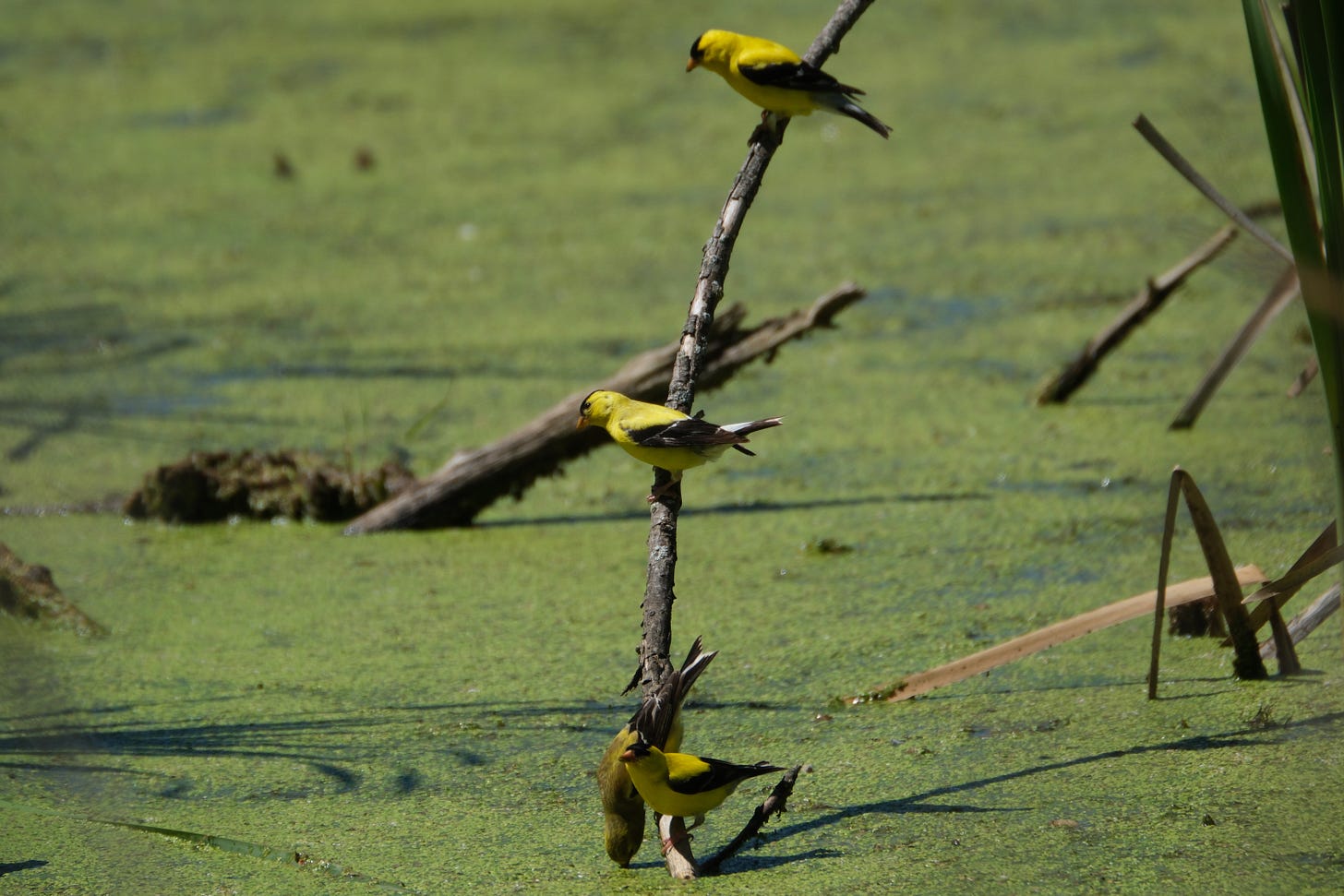
Again, a small flock had descended to feed on the algae. While there were plenty of spots where they might gain access to their meal, they seemed to congrate in areas where there there wasn’t a lot of vegetation, so they avoided the edges of the marsh and perched on small twigs and other deadfall just above the water’s surface.
As the season progresses, I’ll be interested to see if and when the goldfinches will switch back to eating seeds - perhaps they’re still getting a mix, and, since I mostly bird in the morning, I’m missing them if they sup on seeds later in the day. I’ll just have to keep watching!
Feel free to leave a comment or ask a question. I’d be interested to know where folks are spotting their American Goldfinches this year.
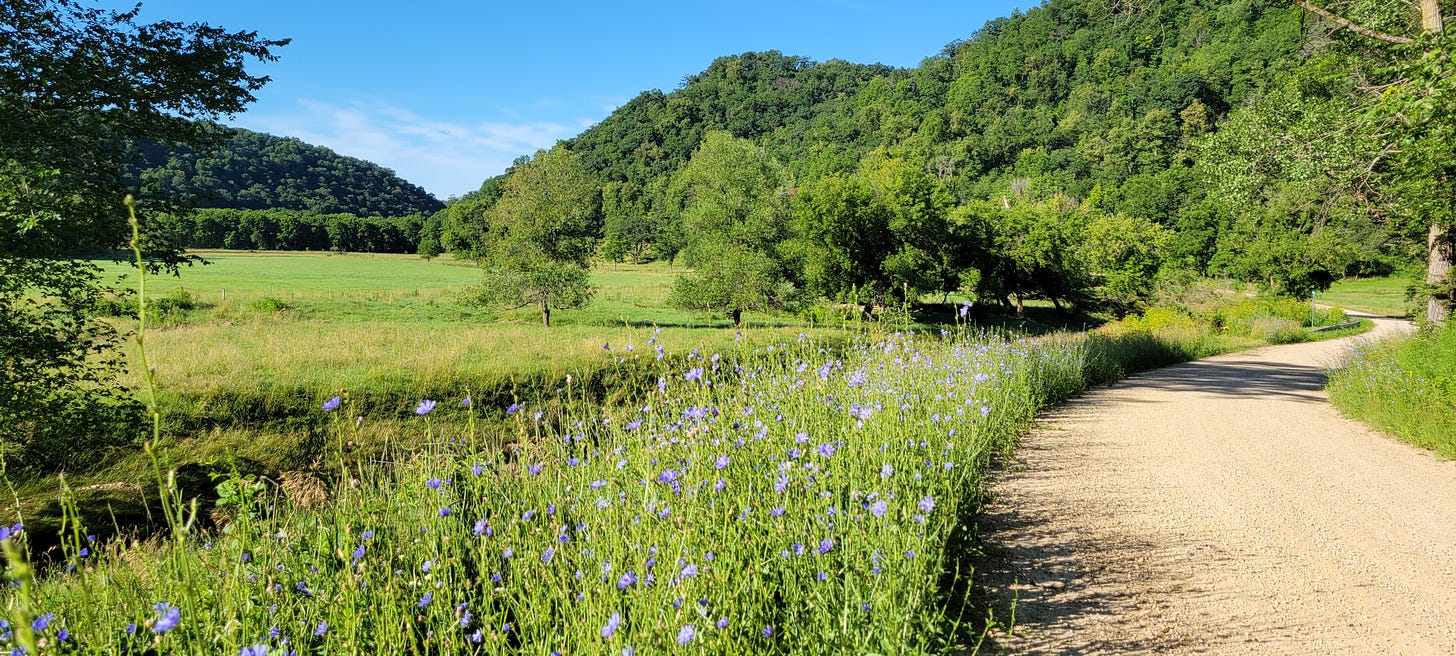
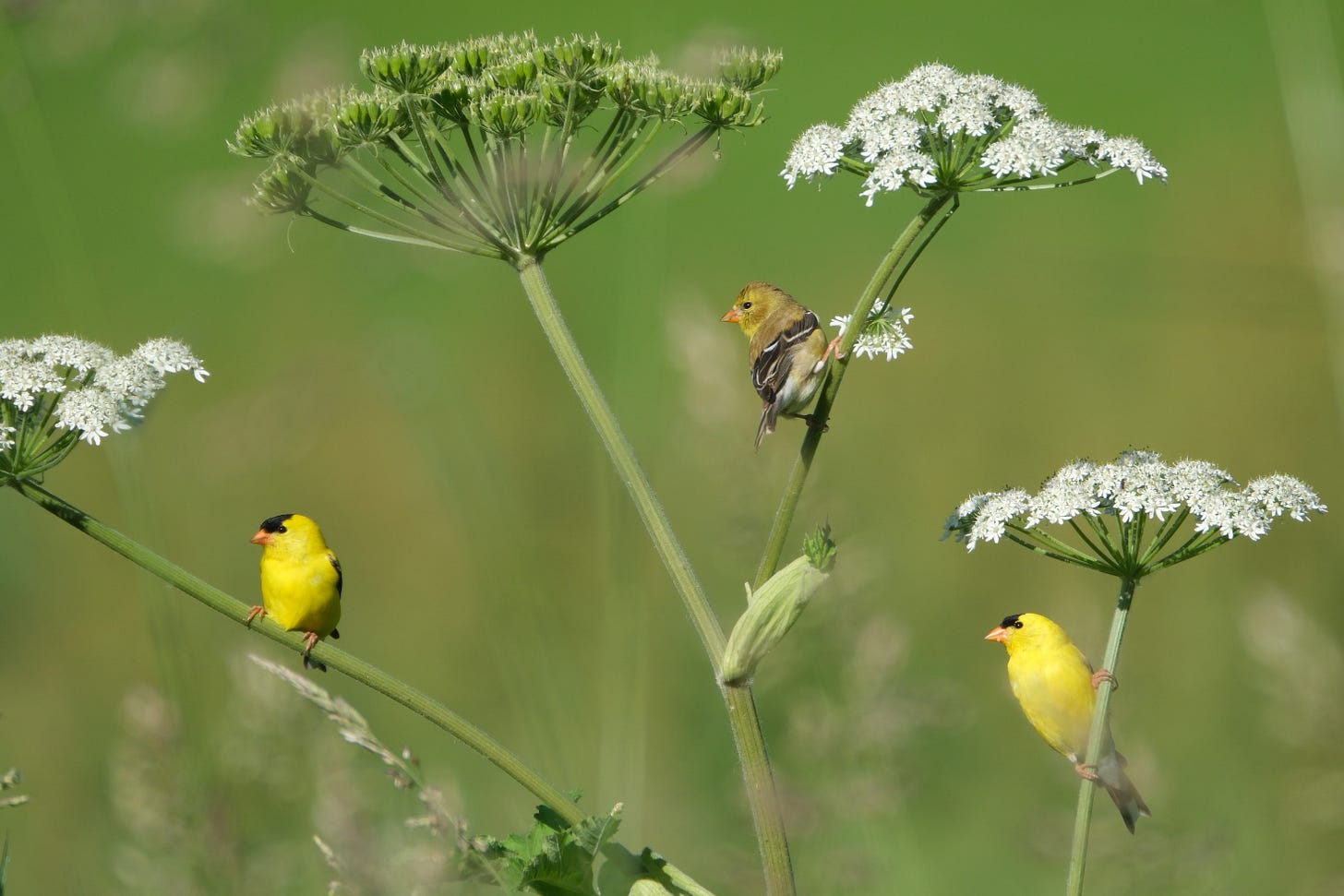
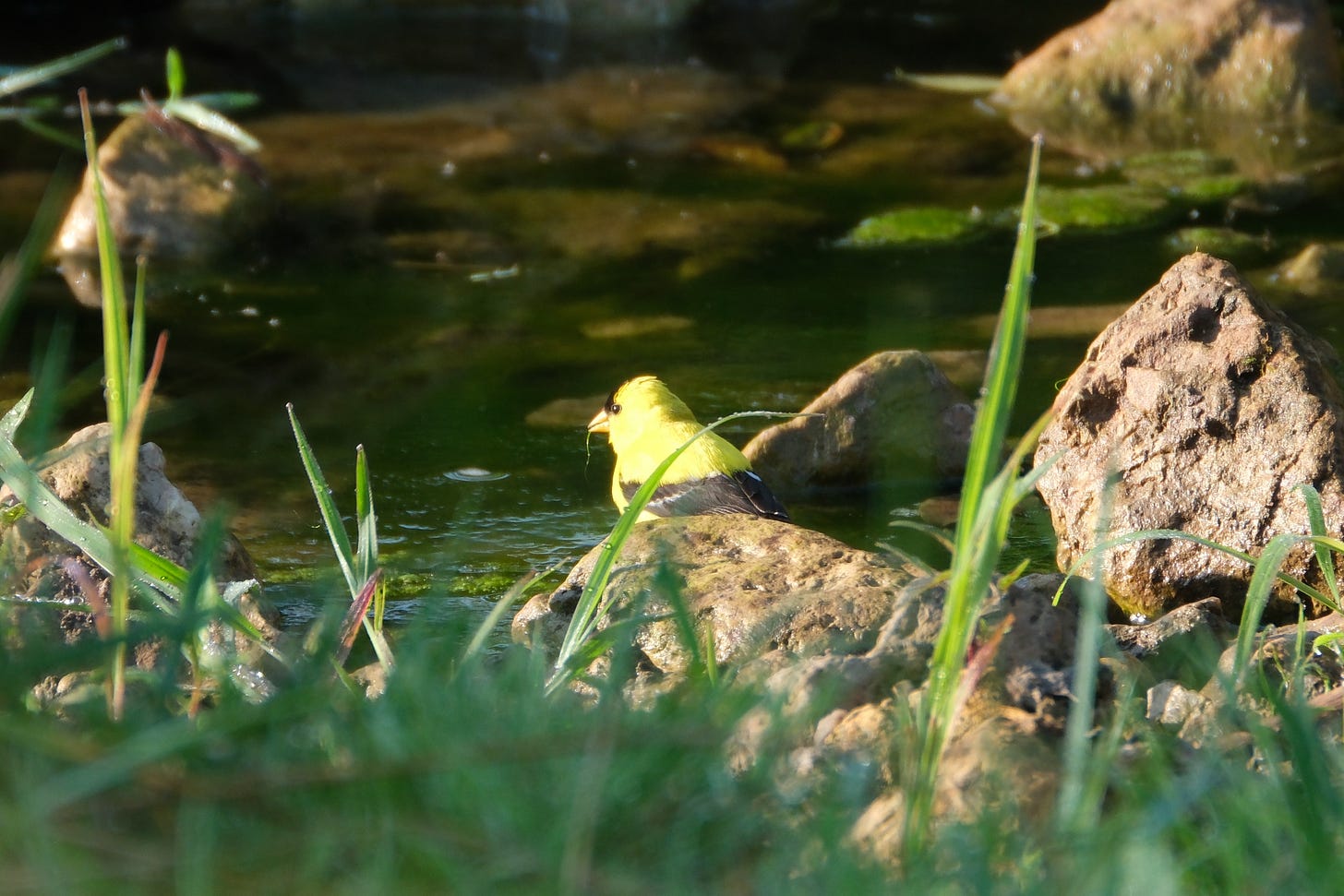
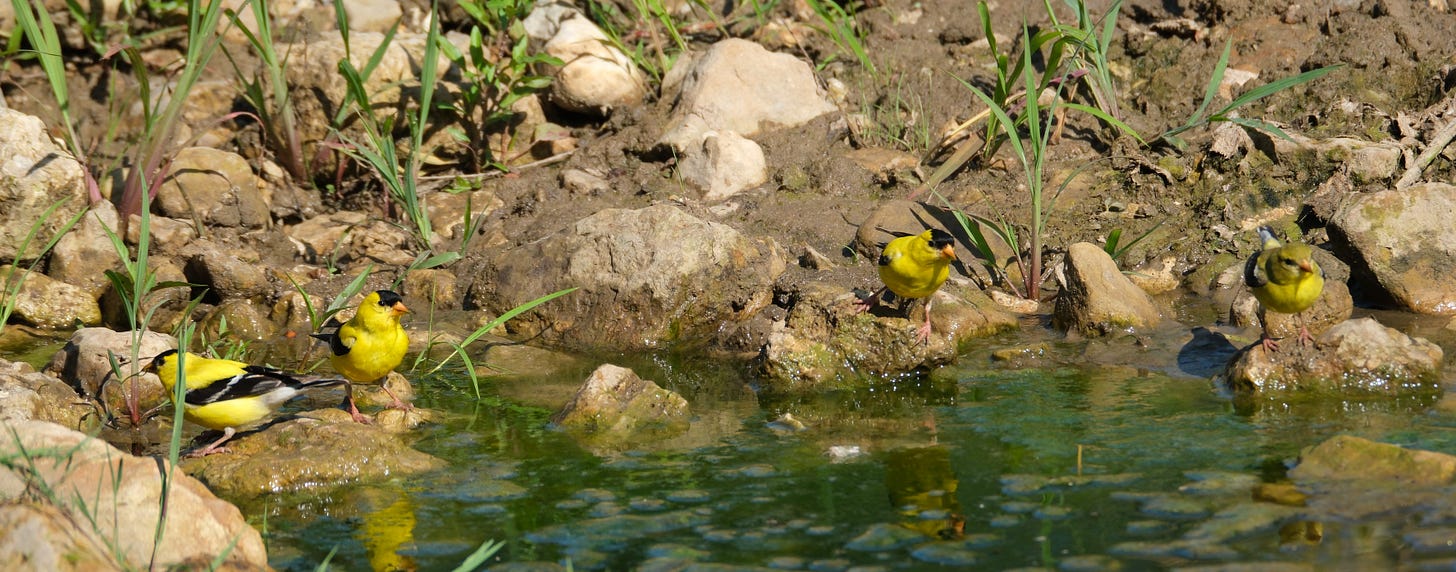
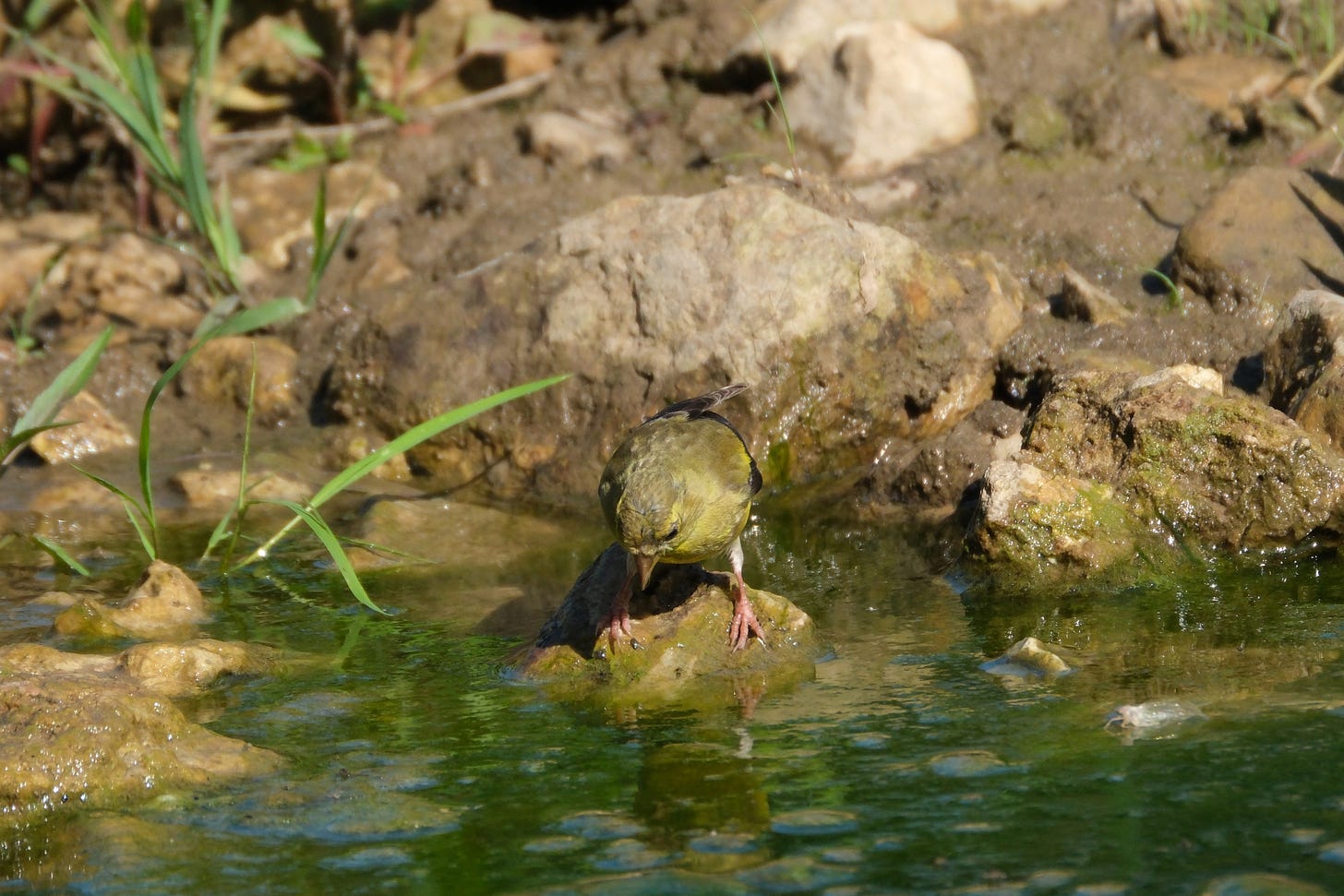
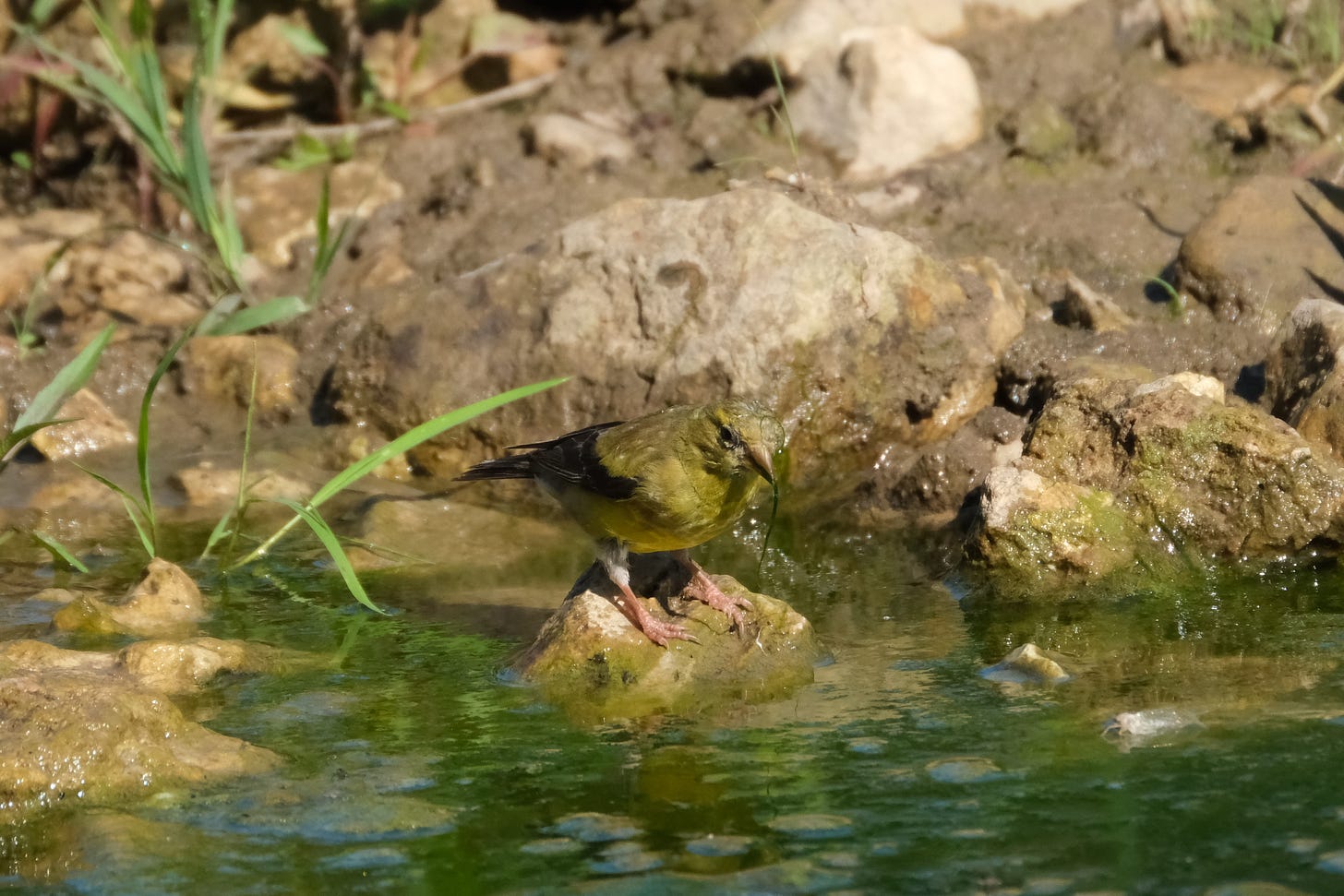

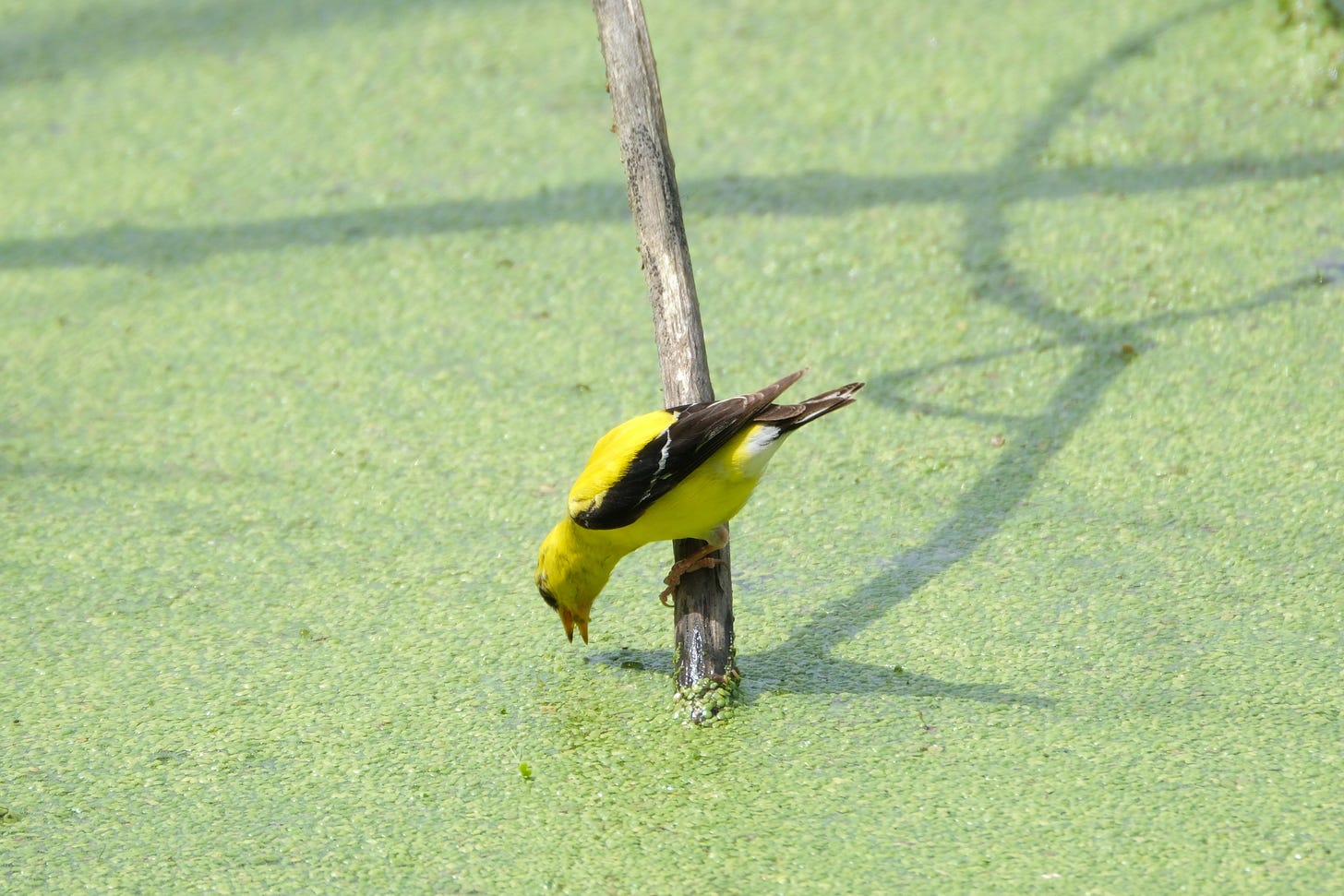
In my front yard! We have a lots of native plants and they hang out a lot in the goldenrod and hyssop. I always wish I could get a picture but no luck so far